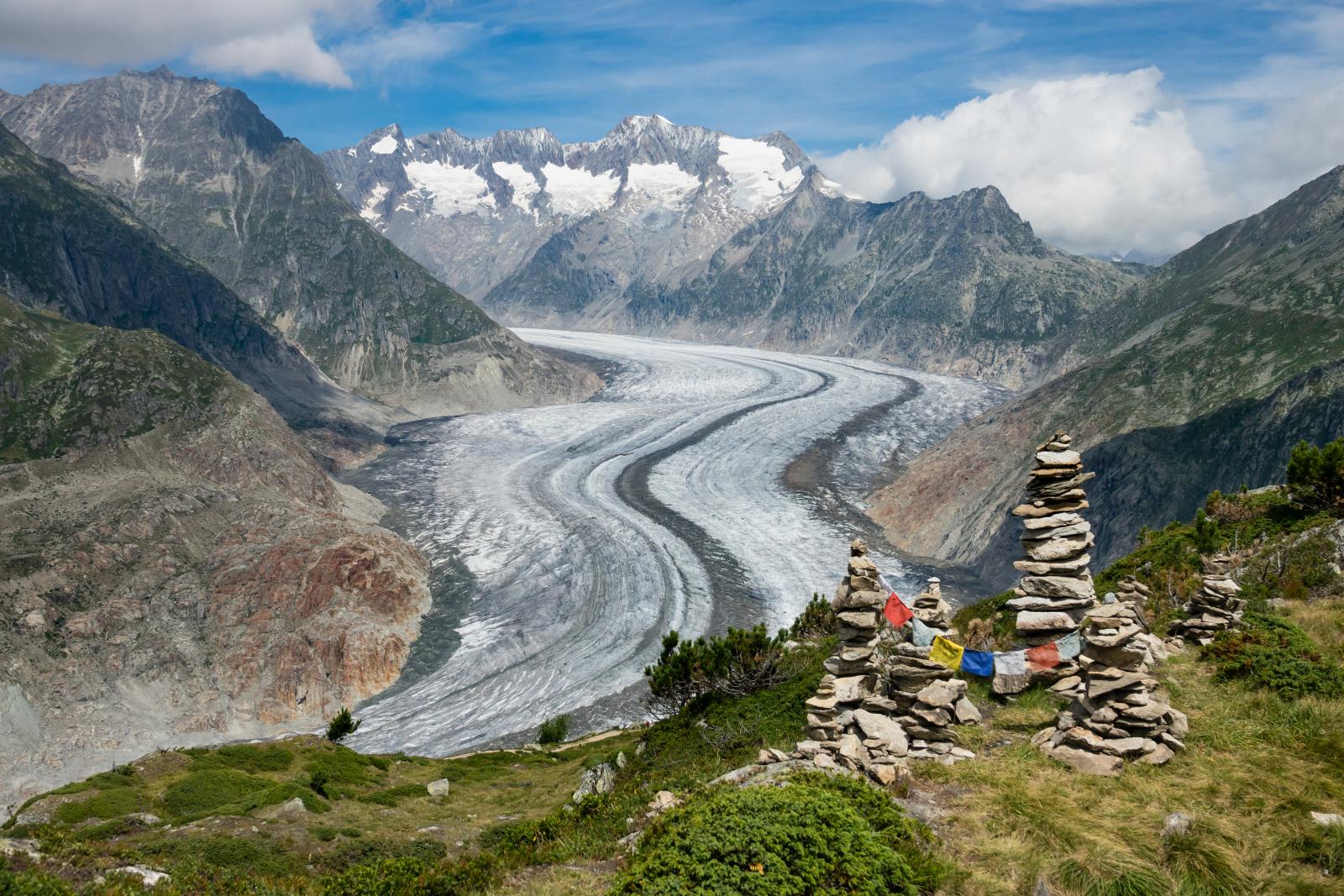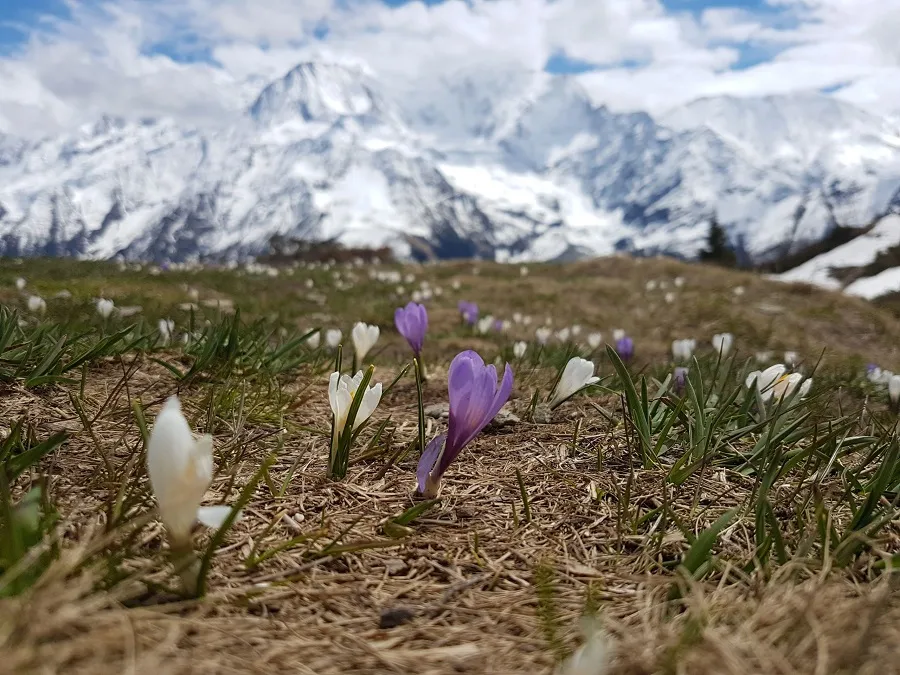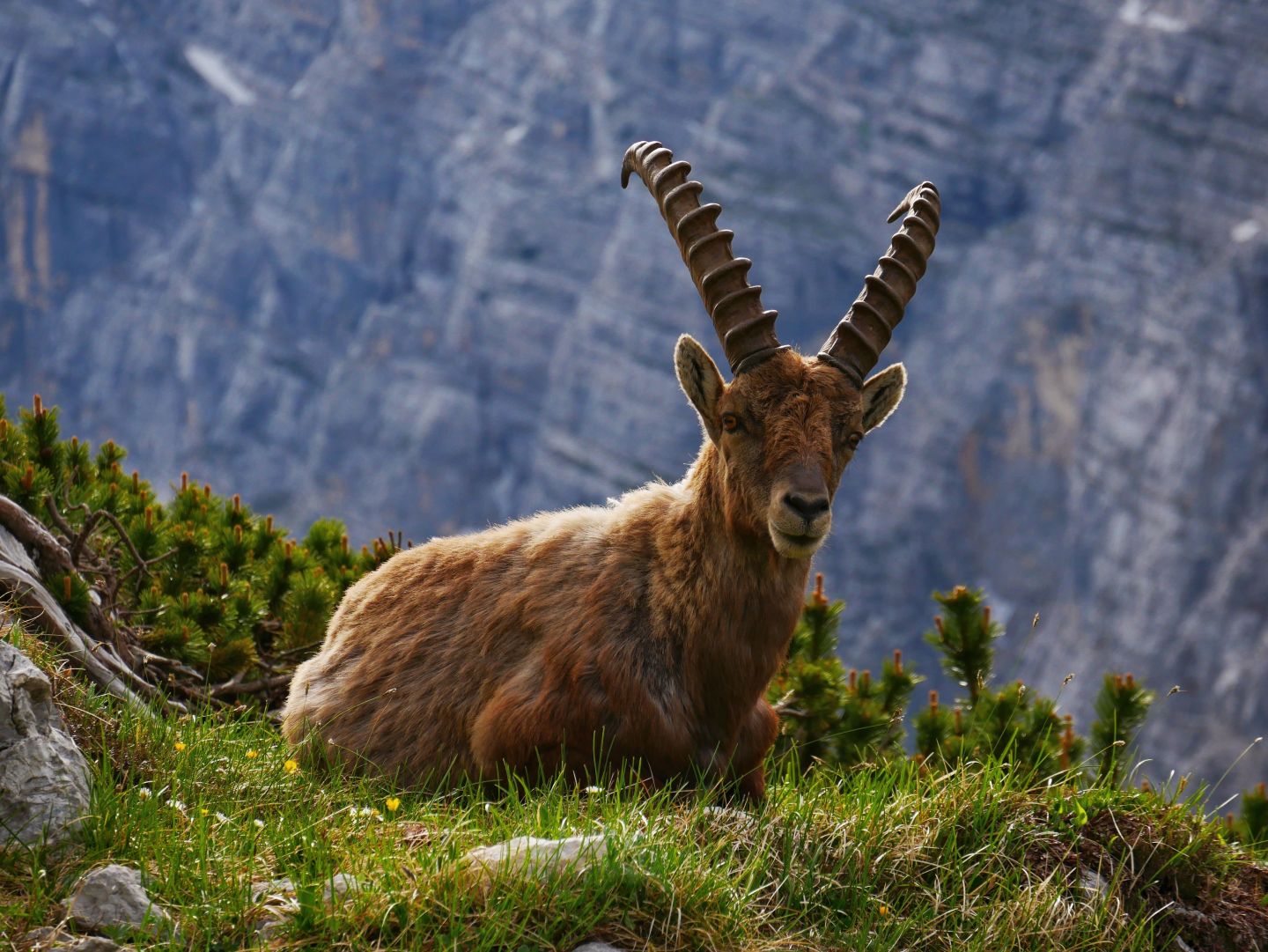The Alps are experiencing profound effects from climate change. This Alpenwild blog post will look into the scientific data behind glacier recession and its ramifications for the region’s flora and fauna.
Glacier recession
Rising temperatures have led to significant glacier retreat in the Alps. Since 1850, mid-altitude glaciers have lost 30-40% of their surface area and half of their volume, with an additional 10-20% disappearing since 1980. Studies predict that more than 50% of Switzerland’s small glaciers will vanish within 25 years. This retreat will expose moraines, which will alter the landscape.

Alpine flora and fauna
In addition to glaciers, climate change is altering species distribution, abundance, and seasonal timing in the Alps.  Emblematic species like the ptarmigan and alpine ibex are particularly affected. Increasing temperatures and changing snow cover force these species to higher elevations, disrupting habitats.
Emblematic species like the ptarmigan and alpine ibex are particularly affected. Increasing temperatures and changing snow cover force these species to higher elevations, disrupting habitats.
The ptarmigan is projected to lose 60% of its habitat by 2050 and face extinction by 2090. Similarly, the alpine ibex has adapted to warmer temperatures by becoming nocturnal. However, this change exposes them to nocturnal predators like wolves and challenges their ability to navigate treacherous terrain in darkness.

Urgency of action
To mitigate these impacts, it’s necessary to take immediate action. Governments, organizations, and individuals need to prioritize conservation efforts, reduce greenhouse gas emissions, and promote sustainable practices. Only through collective action can we preserve the ecological integrity of the Alps and ensure the survival of its inhabitants.
- Are Helicopters Essential for Supplying Swiss Mountain Huts? - August 12, 2024
- How To Minimize Your Carbon Footprint When You Travel - May 6, 2024
- Climate Change and Its Toll on the Alpine Ecosystem - March 29, 2024

